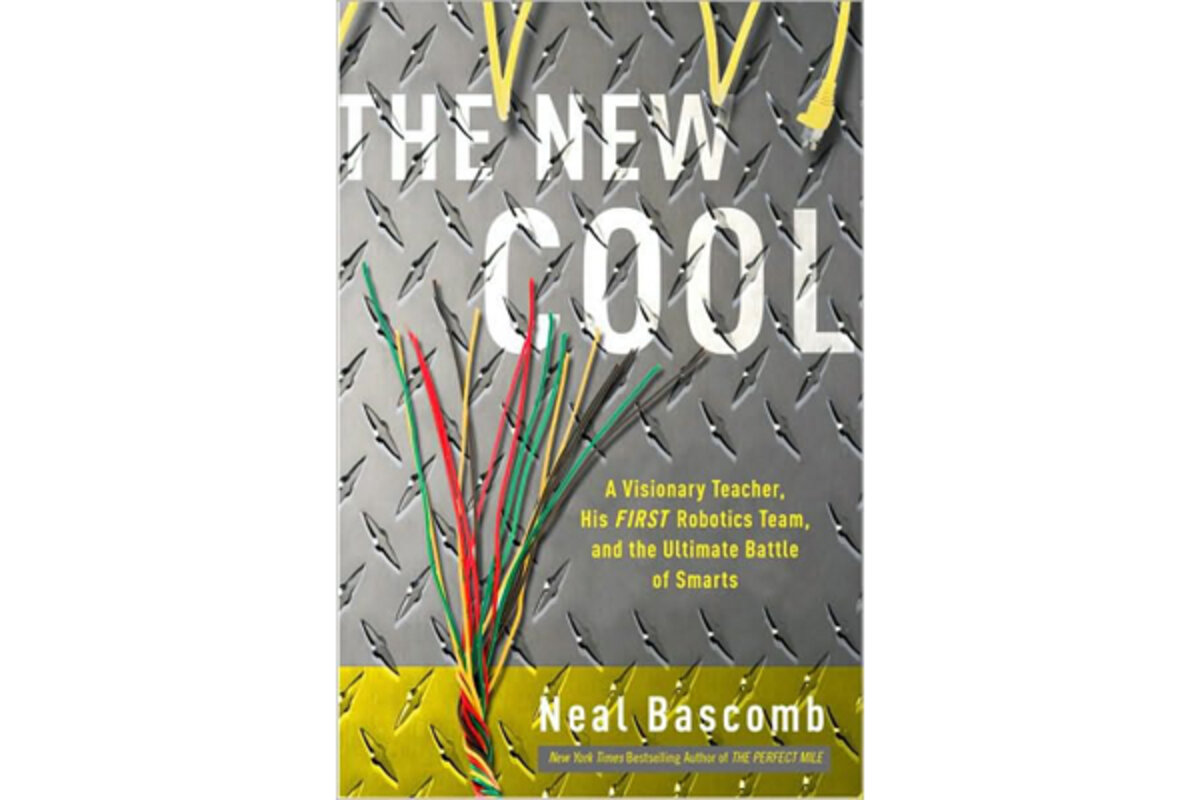The New Cool
Loading...
Itās the kind of story we want to get behind: a group of diverse high schoolers led by a tough but caring mentor, face a challenge for which none of them are prepared. As the disparate group becomes a team, putting in blood, sweat and tears, we cheer them on in their quest toward success.
This is the kind of story author Neal Bascomb strives to tell in The New Cool: A Visionary Teacher, His FIRST Robotics Team, and the Ultimate Battle of Smarts. Unfortunately, itās a goal he fails to achieve.
āThe New Coolā introduces us to the DāPenguineers, a group of 31 high school seniors who attend the engineering academy at Dos Pueblos High School in Goleta, Calif. The book follows these students as, led by physics teacher Amir Abo-Shaeer, they work to create a robot for FIRST, a worldwide competition.
CSMonitor picks: the best nonfiction books of 2010
Rivaling football in its number of screaming fans and dedicated participants, FIRST was dreamed up by the eclectic and brilliant millionaire Dean Kamen, whose eccentricities (his bedroom door is designed to look like a cupboard door, for instance, and he usually rides his helicopter to work) abound. Kamen is a man who wants to fix the big problems in our world. He worries that Americaās preoccupation with celebrities and sports players instead of science and technology will leave us lagging in worldwide innovation. Kamen created FIRST to show the next generation of students that being smart is āthe new coolā and to inspire them to follow a technical path.
FIRST isnāt a show-and-tell kind of competition; itās an all-out war. Robots, created all across the country during a six-week building period, come together in regional and national battles. In the end, one team and one robot triumphs over all others. If the DāPenguineers win the world championship competition, or if they gain publicity, Amir might just be able to raise the $3 million he needs to construct a building for his growing academy.
The stakes in this competition ā for the DāPenguineers, for Amir, and for the country at large ā seem high. The competition seems fierce. The robot challenge sometimes seems impossible.
But as you read āThe New Cool,ā none of this excitement comes through. As we follow the process of creating a robot, the book drags, focusing little on the students themselves.
For two pages, Bascomb describes how Amir teaches friction. For another two, he explains how students create sketches in computer-aided design program SolidWorks. Weāre taught torque, the logic of coding, and how a lathe works. The first half of the book is filled with these dry topics while weāre left to wonder who exactly the DāPenguineers and Amir are.
A few students do stand out. Thereās Gabe, the talented-beyond-his-years programmer who loves theater and has a father diagnosed with leukemia. There's the robotās eventual driver, Chase, who struggles with a learning disability and who has finally found a home in Amirās program. And thereās Turk, the die-hard sports fan who hopes to become the teamās shooter in the FIRST competition.
But you never hear enough from these students and you find yourself wishing Bascomb had asked harder questions: How does Gabe cope with his fatherās illness and the responsibility of FIRST? How does it feel for Chase to deal with a learning disability while designing a robot? And what do they really think of their teacher, Amir, whom we never really understand?
Equally frustrating is that we donāt get to know the 28 other students on the team who pop in and out with just a sentence or two of explanation. With so little connection to the students, it's hard to be impressed when the group ultimately comes together as a team.
Bascomb originally intended to follow three FIRST teams for the book, but ultimately decided to tell just the DāPenguineerās story. Nevertheless, he does pen two chapters about the other two teams, one of which is called 2Train. 2Train member Gabe Ruiz has a story begging to be told. Heās from the South Bronx, desperate to escape, and looking at FIRST as his ticket out. As the short chapter about Gabe comes to a close, it's hard not to think about how much better the book would have been if 2Train had been the focus.
The pace of "The New Cool" picks up slightly at the regional and championship competitions as the DāPenguineers' hard work begins to pay off, but by then it's too late and too little.
Despite the important message contained in āThe New Coolā the book fails to resonate. Thereās no question but that the kind of robots created in the FIRST competition are impressive. And thereās no denying that the students who make them learn invaluable lessons. Amirās academy is the kind of solution that could fix public education; Kamenās vision might save the nation.
Which is why itās such a shame that this book doesn't do any of it justice.
Kate Vander Wiede is the managing editor of The South End News in Boston.
Join the Monitor's book discussion on and .





